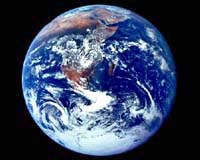CHANNELS SERVICES | 
There are today nearly as many polar bears as people in the Norwegian archipelago of Svalbard, a mere 1,000 kilometers (620 miles) from the North Pole, but experts fear that balance is about to shift as the white king of the ice roams steadily towards extinction. Theoretically a protected species, the polar bear has in practice been exposed to an increasing number of man-made perils, leading researchers to worry that it could be completely extinct in just a matter of decades. "There's a big risk of losing the polar bear altogether," said Kit Kovacs, a Canadian who heads up bio-diversity research at the Norwegian Polar Institute. While measures are being taken to protect the bears, new threats keep popping up, negating the work that has been done. Even before the bans on dangerous substances like PCBs (polychlorinated biphenyls) and DDT (dichlorodiphenyltrichloroethane) really start paying off, a flurry of other dangerous substances like mercury and brominated flame retardants have begun posing a significant threat to the king of the ice. To researchers' astonishment, traces of flame retardants -- used in abundance in the electronics, textile and automobile industries -- have recently been found in Svalbard polar bears for the first time. In the archipelago, which today is home to some 2,500 of a total 25,000 Arctic polar bears, these massive mammals are so common that most people carry a shotgun with them whenever leaving the human settlement areas. Soon however, experts fear there will be no need to bring along firearms for protection, since all the new dangerous substances risk severely curtailing the number of bears in the area. "The source of the toxins and environmental waste is basically in the south, in the industrial zones like North America, Russia and Europe. The substances tend to evaporate and to settle in the Arctic," said Bjarne Otnes, a local Svalbard government representative in charge of environmental issues. While the direct effects of these substances remain unclear, researchers suspect that they at the very least seriously damage the bears' immune system as well as their ability to reproduce. Over recent years, for instance, a number of "pseudo-hermophrodite" polar bears -- females with such protruding sexual organs that they resemble penises -- have begun appearing. The substances "get into the food chain, first in the algae. The algae get eaten by the small fish, the small fish get eaten by the bigger fish, the big fish get eaten by the seals and the seals get eaten by the bears," Otnes said. Topping the food-chain, polar bears store nutriants -- and poisons -- consumed by their prey in their fat as they prepare for hibernation. "When the females metabolize the fat to feed the cubs, they spread the compounds in their body and in their milk. Cubs are getting heavy doses while they are at the most vulnerable stage of their lives," Kovacs explained. The greatest danger however comes from another human-related environmental shift: global warming, which is rapidly shrinking the ice masses that make up the polar bears' vital hunting grounds. According to the most widely accepted projections, the Arctic icecap will have completely disappeared -- during the summer at least -- by 2080. That could be disastrous for the between 80 and 90 percent of polar bears who spend their summers on the ice hunting seals, which make up 95 percent of their food intake. The receding ice will probably eventually drive the polar bears onto land, according to Kovac, who warns that they then may mingle with brown bears. "But that would be the end of the polar bear as such. It's definitely a species at high risk and mating would then be the last of their worries anyway," she said. As the ice disappears, the bears will be forced to swim longer distances to get to new hunting ground, something that will be difficult for cubs, researchers say. The effort of crossing larger bodies of water is also expected to detract from the adult bears' sex drive and thereby their ability to reproduce. The diminishing ice has already claimed three potential victims. A mother polar bear and her two young cubs are currently stranded on Bjoernoeya ("Bear Island" in Norwegian) in the Svalbard archipelago after being caught off guard by a rapid ice melt this spring. The three bears have been deprived of access to their primary food source, seals, which disappeared with the ice. The local Svalbard government has so far ignored calls to save the small family, instead deciding to let nature take its course. Polar bears generally catch baby seals curled up inside cavities in the ice by throwing their approximately 300 kilos (about 660 pounds) against the ice and breaking it. "They gob seals like M and Ms. Initially, as spring ice disappears, it might make it easier for polar bears to catch seals," Kovacs said. The polar bears will not be able to ride that gravy train for long however, she said, warning that these kings of the ice could soon be delegated to museum wings dedicated to extinct species. All rights reserved. Copyright 2003 Agence France-Presse. Sections of the information displayed on this page (dispatches, photographs, logos) are protected by intellectual property rights owned by Agence France-Presse. As a consequence, you may not copy, reproduce, modify, transmit, publish, display or in any way commercially exploit any of the content of this section without the prior written consent of Agence France-Presse. Quick Links |
|
| The contents herein, unless otherwise known to be public domain, are Copyright 1995-2003 - TerraDaily. AFP Wire Stories are copyright Agence France-Presse ESA Portal Reports are copyright European Space Agency. Additional copyrights may apply in whole or part to other bona fide parties. Advertising does not imply endorsement, agreement or approval of any opinions, statements or information provided by SpaceDaily on any web page published or hosted by SpaceDaily. Privacy Statement |
